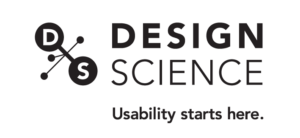Design (Science) Thinking
We put our heads together last week in a workshop aimed at expanding the role of Design Thinking in our organization’s culture. Read more
We put our heads together last week in a workshop aimed at expanding the role of Design Thinking in our organization’s culture. Read more
If you work in a field like human factors and usability research, the question “so what do you do for a living?” is rarely simple to answer. Read more
This blog post is part two of a two-part series on using video records in contextual inquiry.
In part one “Video Capture and Analysis: 5 Reasons to Film Your Research,” we discussed five reasons to film your research. One of the biggest advantages of filming your research is that you can analyze the video after the research has concluded.
In video analysis, you codify behaviors or events to put quantitative values to qualitative observations. These quantitative values can be a useful way to quickly and simply communicate your findings. Video analysis has been a staple of behavioral research methods for a long time, but there’s surprisingly little information about how to do it effectively. Read more
This blog post is part one of a two-part series on using video records in contextual inquiry.
Design Science researchers almost never go into the field alone—we’re accompanied by a videographer, who may be carrying up to 5 cameras. The ability to film in restricted areas like operating rooms and catheter labs is something that sets Design Science apart, and with good reason: it’s difficult to gain permission to film in an operating room. It requires long-standing relationships with surgeons, physicians, nurses, and the medical facilities they work for. These relationships are built on complicated, time-consuming navigation of hospital approvals, and repeated positive experiences with our researchers and videographers. Read more
Understanding the ramifications of less-than-perfect validation testing results can be complex. In his recent article for Med Device Online, Peter Sneeringer presents 6 questions to help companies decide if errors seen during testing indicate a likelihood that the FDA will reject their submission.
Read more
On April 15th, the Food and Drug Administration will begin accepting applicants through its new Expedited Access Premarket Approval Application for Unmet Medical Needs for Life Threatening or Irreversibly Debilitating Diseases or Conditions (“Expedited Access PMA” or “EAP”). Read more
What 4 things should app developers, traditional medical device and pharmaceutical companies, and regulators do to accelerate the growth of mHealth? Read more
Are you passionate about working collaboratively to make a felt difference in the world? At Design Science we have one mission – fitting products to people.
A new guidance for medical-device field research has just been released: the Technical Information Report, AAMI TIR51:2014, “Human factors engineering – Guidance for contextual inquiry.”
123 S. Broad Street, Suite 1350
Philadelphia, PA 19109
T 215.627.4122
F 215.627.4335
909 Davis Street, Suite 470
Evanston, IL 60201
T 312.584.0240
F 215.627.4335
Blütenstraße 15
80799 München
Germany
T +49.(0)178.876.7277
We conduct rigorous research to optimize the usability, safety, and customer appeal of products. Contact us to discuss a project today.
